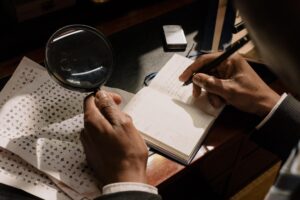- Understand different types of arguments
- Use logic to see if a statement is true
- Identify logical fallacies
The Logic Police
You are a detective in the Logic Police, tasked with evaluating arguments for their validity and exposing logical fallacies. Your latest case has you navigating a labyrinth of statements to decipher the truth. Can you use your logical reasoning skills to solve the case?
Prepare to be immersed in the world of logic and reasoning as you navigate through witness testimonies, uncover logical fallacies, and gather evidence to solve the mysterious art heist case. Your critical thinking skills and logical reasoning abilities will play a crucial role in deciphering the truth behind the theft and apprehending the art thief. Stay focused, analyze the arguments carefully, and expose any logical inconsistencies as you work towards solving the case. Good luck, detective!

The case you are working on involves a high-profile art heist at the city’s renowned museum. A priceless painting has been stolen, leaving the authorities baffled. The only thing left at the scene is a red rose. As a detective in the Logic Police, you are tasked with evaluating arguments, dissecting witness statements, and uncovering logical fallacies to solve the case. Two fellow detectives, Det. Anderson and Det. Bernard, provide you with their conclusions on the case.
- Det. Anderson: “Every time we’ve seen Mr. Jensen’s work, he’s left a red rose at the scene. There’s a red rose here, so he must have committed this crime too.”
- Det. Bernard: “All the crimes committed by Mr. Jensen involve a red rose left at the scene. We found a red rose here, so it’s clear he’s the culprit.”
Your superior officer provides a statement: “If a crime has been committed, then there will be evidence. There’s evidence at the scene. Thus, a crime has been committed.”
The argument your superior officer provided can be broken down as follows:
- If P (a crime has been committed), then Q (there will be evidence)
- Q (There’s evidence)
- Therefore, P (a crime has been committed)
The truth table for this is:
| P | Q | If P then Q | Q (Evidence) | P (Crime committed) |
|---|---|---|---|---|
| T | T | T | T | T |
| T | F | F | F | T |
| F | T | T | T | F |
| F | F | T | F | F |
From the truth table, we can see that when Q (There’s evidence) is true, P (a crime has been committed) can be either true or false. Therefore, the conclusion P (a crime has been committed) is not necessarily true when Q (There’s evidence) is true. Thus, the argument is not valid.